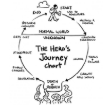English exam 7th grade (short story)
1/28
There's no tags or description
Looks like no tags are added yet.
Name | Mastery | Learn | Test | Matching | Spaced |
|---|
No study sessions yet.
29 Terms
Irony
Definition: The actual meaning is opposite of the intended meaning (verbal, situational, dramatic). For example: A fire station burns down.
Metaphor
Definition: A direct comparison between two unlike things. For example: Her smile is the sun.
Simile
Definition: A comparison between two unlike things using 'like' or 'as'. For example: She is as brave as a lion.
Imagery
Definition: Using descriptive words to create a picture in the reader’s mind, appealing to the five senses. For example: The aroma of roasted coffee beans filled the air.
Hyperbole
Definition: Over exaggeration. For example: I’m so hungry I could eat a horse.
Personification
Definition: Giving human-qualities to inanimate objects. For example: The wind whispered through the trees.
Foreshadowing
Definition: When the author provides clues that will help the reader anticipate the ending. For example: A character in a crime novel finds a mysterious note, hinting at future events.
Symbol/Symbolism
Definition: Using concrete objects/things to represent abstract concepts. For example: A dove symbolizes peace.
Person VS Person
Person vs. Person
Definition: A conflict between two characters.
Example: A character fighting another character in a novel.
Purpose: Drives the plot and creates tension.
Person VS Self
Person vs. Self
Definition: A conflict where a character struggles with their own emotions or decisions.
Example: A character deciding whether to tell a painful truth.
Purpose: Adds depth to character development.
Person Vs Evironment
Person vs. Environment
Definition: A conflict where a character faces challenges from the natural world.
Example: A character trying to survive in a harsh wilderness.
Purpose: Highlights human resilience or fragility.
Situational Irony
When a character does the opposite of a normale result

Verbal Irony
When a speaker or narrator says something that’s different from what they really mean or what’s really happening.

Dramatic Irony
When a character doesn’t know something important that affects what’s happening in the story.

Setting
1-The time
2-The place
3-The date
Protagonist
Is the main character.
Leads the narrative.
Often opposed, exploited, or victimized.
Directly involved in the conflict.
Antagonist
Opposes the protagonist.
Often (not always!) the "bad guy."
Static
Doesn't change throughout the story.
Consistent in qualities/traits/values from beginning to end.
Dynamic
Changes throughout the story.
Qualities/traits/values transform from beginning to end.
Round
Hard to describe and predict.
Variety of qualities and emotions.
FLAT
Easy to describe and predict.
Displays very few quality traits.
Plot structure
Exposition
Rising action
Climax
Falling action
Denouement

Exposition
Beginning of the story.
Introduces characters, setting, and conflict.
RISING ACTION
When the conflict is addressed by the protagonist.
Protagonist faces a "crisis."
CLIMAX
The most interesting moment of the narrative.
The protagonist's greatest challenge.
FALLING ACTION
Immediately follows the climax.
Reveals the consequences for the character after addressing climax.
DENOUEMENT
Explains what happens after protagonist has solved conflict.
Leaves readers with emotions/thoughts.
HERO’S JOURNEY

IN MEDIA RES
-Not a normal plot structure
(Foreshadowing,back story)
-Meaning in the middle of things
